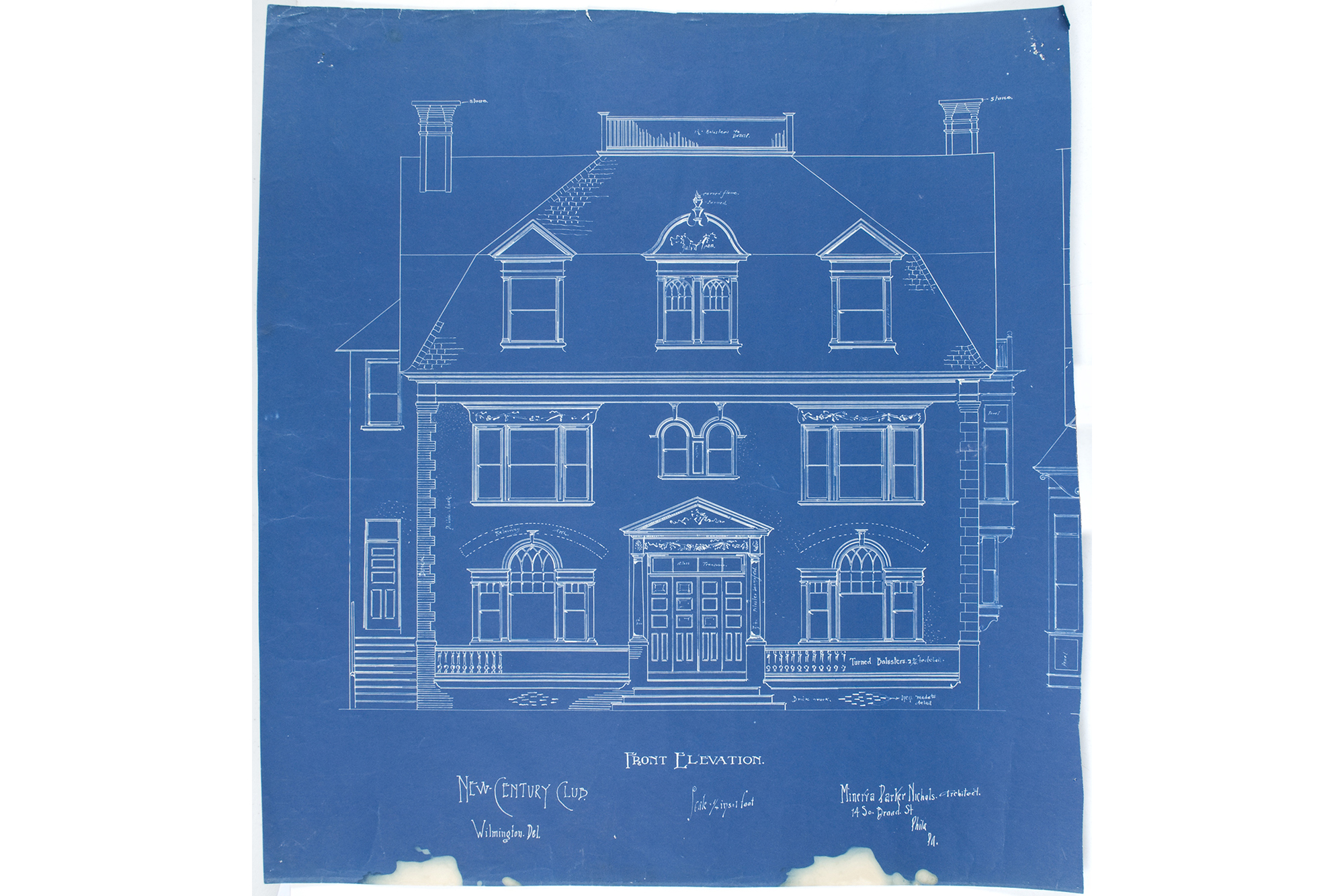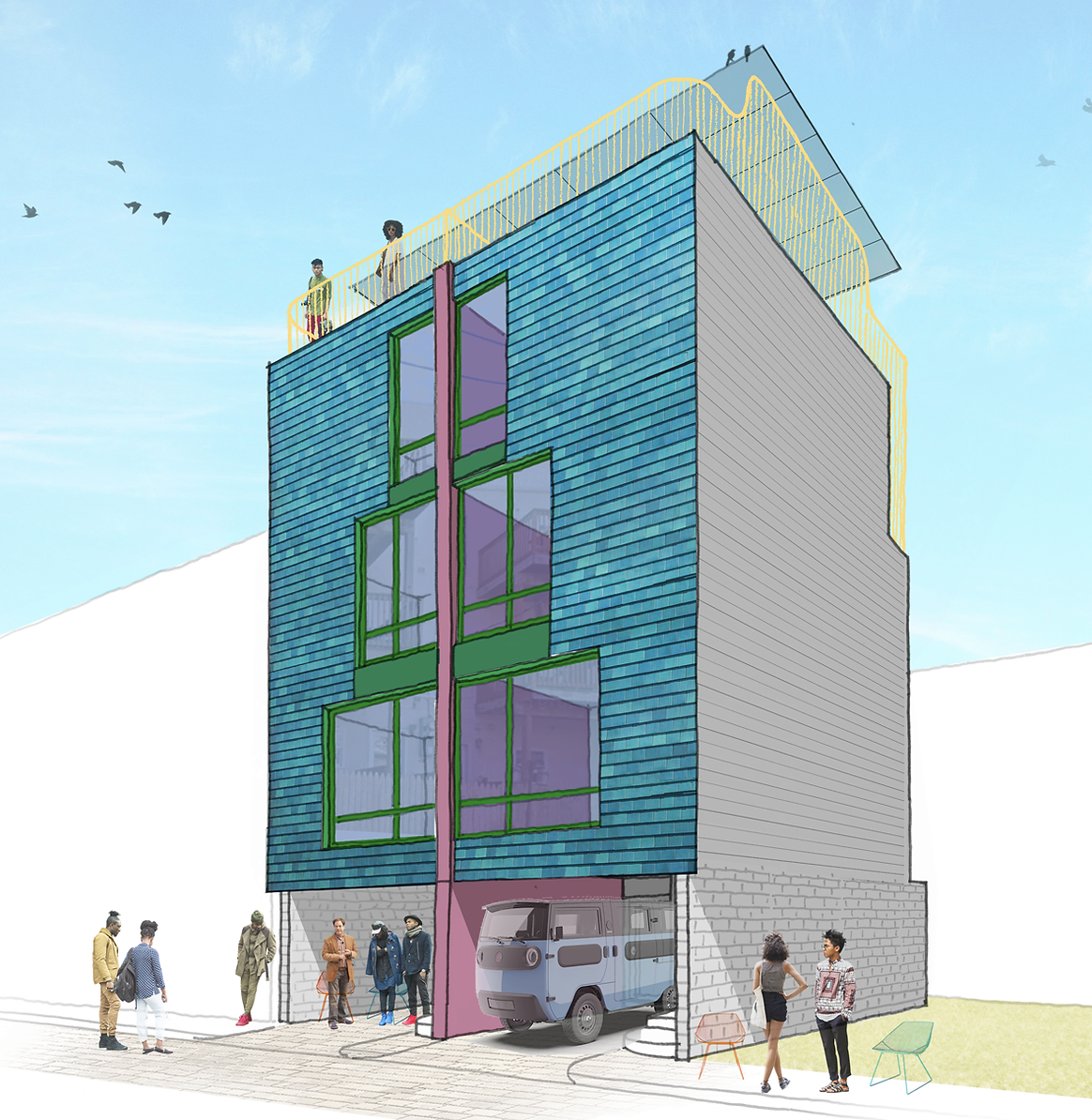architecture
The Secret Life of Buildings: Mid Century Modern Philadelphia
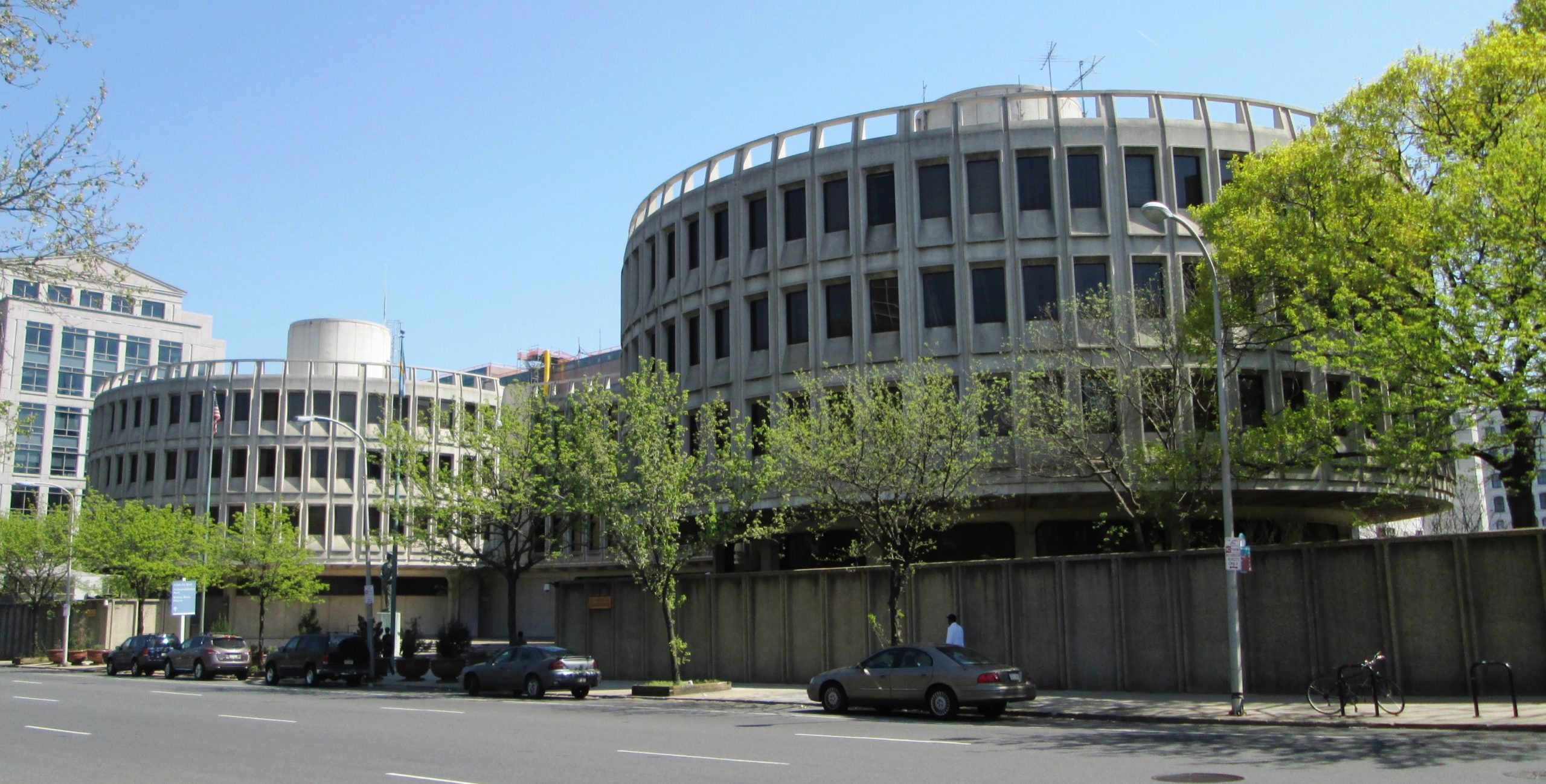
The Philadelphia skyline changed dramatically from 1940 to 1970, creating over 400 significant mid century modern buildings. Designed by the great architects of their day, these bold buildings reflected a dynamic change in the way we live. Here is a guide to some of our City’s best surviving examples of mid century modern design.
Woolworth, 1948
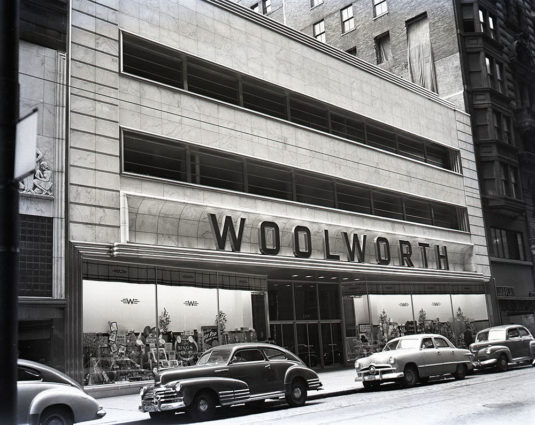
Image: Free Library Picture Collection
When this store opened at 1330 Chestnut, it was the largest Woolworth’s in the nation and marked a radical change in Philly architecture. Its sleek, modern design contrasted with the rococo architecture on the corner of Chestnut and Sansom, as well as the late 19th century Wanamaker Building across the street. Today, it is the home of West Elm, Lucky Strike Bowling, and Blick’s.
Penn Center, 1953
The centrally located complex of office towers and retail space, between 15th and 19th Streets on Market Street, is credited with bringing Philadelphia into the era of modernity. To create it, a ten-block, red stone wall viaduct known as the “Chinese Wall” had to come down. Ed Bacon, executive director of the Philadelphia City Planning Commission, came up with a master plan for the area to be cleared.
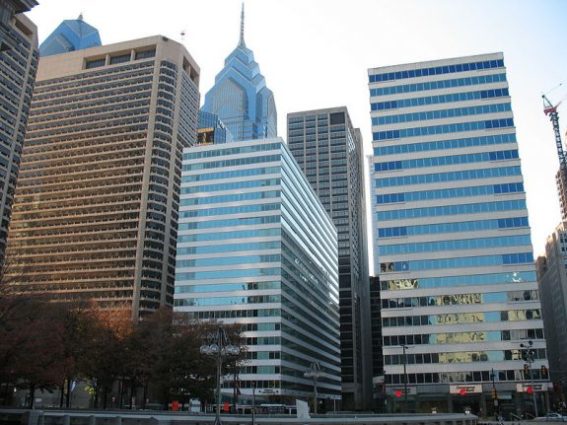
The original plan called for just three hi-rise towers. Now there are eleven. The first to be completed was 3 Penn Center, 1515 Market, designed by Vincent Kling. Five more towers were completed by 1970. Today, the tallest tower is 9 Penn Center with 54 floors, completed in 1990.
Beth Sholom Synagogue, 1959
This Elkins Park synagogue located on Old York Road (Route 611) was one of Frank Lloyd Wright’s last commissions at the age of 85. It was completed five months after Wright’s death and one month before the dedication of one of his most iconic buildings, the Guggenheim Museum in New York City.
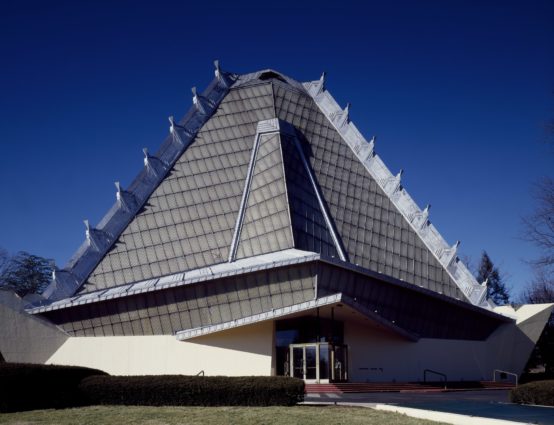
Designed to emulate Mt. Sinai, the building has a steeped, sloped glass and a metal roof which allows light to radiate into the sanctuary. Added to the National Register in 2007, tours are available upon request.
Richard’s Medical Research Labs, 1960
Louis Kahn designed this building at 3700 Hamilton Walk on Penn’s campus when he was a professor in the University’s Architecture School. Now considered a National Historic Landmark, at the time it was completed it was criticized by the scientists who worked there and praised by architects.
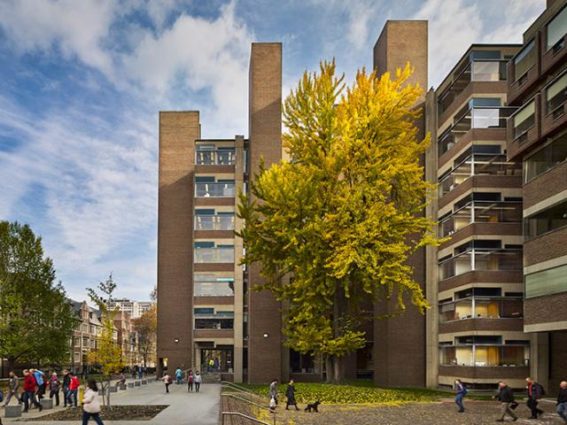
In this innovative design, Kahn returned to the formal complications lost in International Modernism, reviving the richness which had been so much a part of the tradition of Philadelphia architecture. This is one of the most important buildings on the Penn campus, by one of the most important architects of the modern era.
Love Park Welcome Center, 1960
Roy Larson of Harbeson, Hough, Livingston & Larson designed the iconic mid-century “Flintstones” era flying saucer in Love Park as a futuristic celebration of postwar Philadelphia optimism.
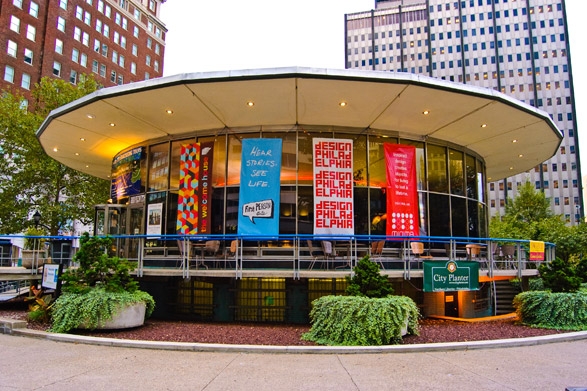
When the Visitors’ Center relocated to Independence Mall in 2016, the saucer was saved from demolition. It is scheduled to reopen as a restaurant with 360-degree views.
Police Administration Building, 1963
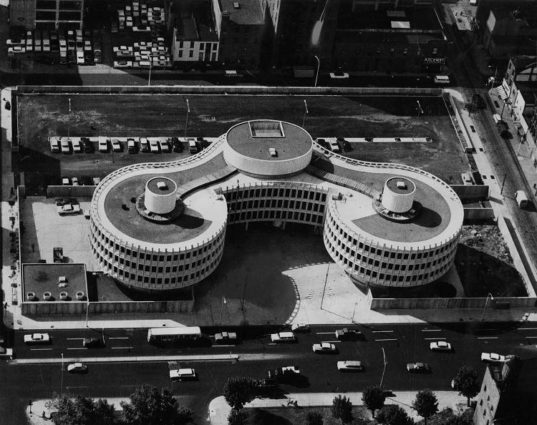
Is it a coincidence that a Brutalist building was created to house Philly’s finest? Known as the Roundhouse, it was designed by Geddes, Brecher, Qualls, and Cunningham and was considered groundbreaking because it was built using an innovative system of pre-cast, pre-stressed concrete. Located at 750 Race Street, the future of the building is unclear as plans to relocate the Police Administration to the former Inquirer Building on N. Broad Street have been delayed.
Society Hill Towers, 1964
When ground was broken for Society Hill Towers at 220 Locust, Philadelphians were puzzled. Who would want to live in what had long been a forsaken area before the advent of Penn’s Landing? The answer was “everyone.”
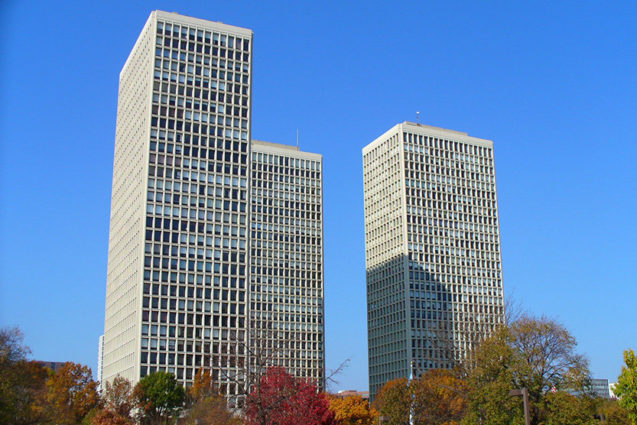
The three 31-floor residential towers were part of an urban renewal effort by Edmund Bacon who had already launched Penn Center. Designed by I.M. Pei, the towers, with their exposed concrete facade and floor-to-ceiling windows became an instant success and helped turn Society Hill into a dining mecca.
At the base of the towers sits a townhouse development, which was also designed by I.M. Pei. A sharp contrast to the mid century architecture of the towers, the exterior of the Pei-designed modernist townhouses feature Flemish bond brick and arched doors. If you’re interested in learning more about these, there’s a great Curbed article about a beautifully-renovated private residence in one of the townhouses.
Romm & Haas, 1964
Designed by Pietro Belluschi, this nine-story building at 100 S. Independence Mall West marked the start of the renewal of the Independence Hall area. Serving as the headquarters of Rohm and Hass, a chemical engineering company, it was innovative for its use of Plexiglas, corrugated sunscreens, and modern interiors.
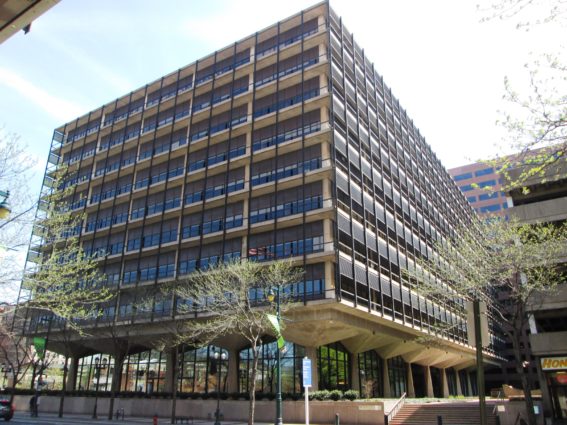
Today, it is considered one of the best examples of International Style. It contains a landscaped plaza that cuts through the middle of the ground level of the building and opens up to a larger plaza with a fountain and small pool.
Our architectural heritage
Many of the design elements of mid century modern architecture continue to resonate in contemporary commercial and residential properties. Even in Philly’s newest buildings, you will find modernist concepts that were first introduced over 75 years ago. That is the pleasure of living in a city that embraces the past and the future!
This article is part of a series titled “The Secret Life of Buildings” where we cover the history and architecture behind Philadelphia’s storied buildings. We’ve written about art deco buildings, repurpoused banks, row house styles, and star bolts, among other topics. What else would you like to learn about? Follow us and DM us on Facebook or Instagram to let us know!






